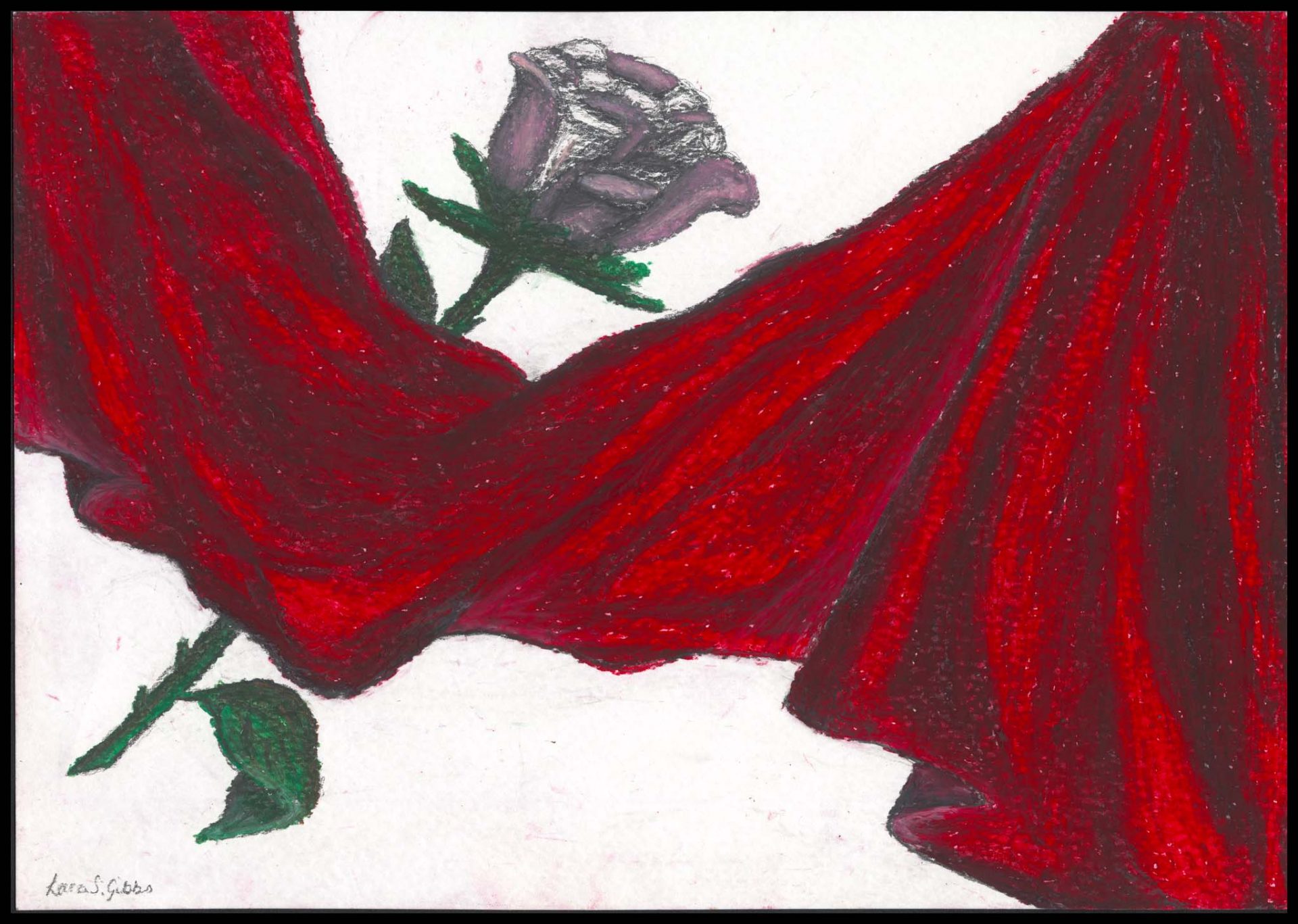The Veil
The patient was a baby girl, a few months old. She had an un-treatable heart condition. She was expected until she was a toddler, or a little older, no-one was sure. The only real certainty was that she would die very early, before her mum and dad could see her grow up.
The piece of work relates to the baby’s mother: my ideas of what must have been going through her mind. At the time it struck me that the only people who genuinely feel what it is to like to watch your child dying are people who have had this tragic experience. To me, it is not something that can be realistically empathized with because it is so awful. In a situation like this, sympathy and pity come much more easily.
The Image
The veil over the page is partly to do with the privacy that any patient has in their emotions about their situation. It is also partly to do with the fact that only people who have experienced situations like this, know what is under the veil and – what feelings are to come and remain.
The rose is the symbol of perfection because to a mother, her child is perfect. Only some of the petals are coloured to show the uncertainty of the next few years for the family. One of the petals is beginning to break away from the others and fall off, because ultimately, the little girl is dying.
The stalk of the rose, with its thorns – her illness is – is mainly hidden. This is because she looked so well when I saw her that it seemed so unreal that she was so ill. It could not be foreseen what agonies her family, particularly her mother, (who stuck in my mind) would have to go through in the not too far away future.
For me, the process of creativity has made me think in a completely different ways to how I would ordinarily have tried to interpret an experience like this. It has opened up the possibility that I can come back to this form of expressing anything, including Medicine.

I think this is a moving artistic interpretation of a very sad situation. I can see why it would be such a vivid memory. Well done.
Initially, I was drawn to the simplicity of the work, encompassing feelings of love and drama. However, I was caught off guard by the interpretation. The piece has conveyed great respect and insight into the perspective of loved ones as they watch the suffering of those they love and hold onto hope in times of great despair. The piece is a testament to the power of expression through art.
‘The Veil’ is a beautiful pastel drawing with a moving, and incredibly upsetting interpretation. Drawn to the meaning behind the hidden thorns, I was shocked by the sheer amount, and depth, of emotion conveyed through the very personal, yet respectful explanation behind the falling petal. The juxtaposition of the beauty of the rose – representing the mother’s love for her child, with the stark red veil and hidden thorns, expressing the darkness of the baby’s illness, creates this poignant piece .
This art piece explores the unimaginable pain faced by parents who watch their children suffer and face early mortality, with Gibbs using the symbolism of the partly-coloured rose and ‘The Veil’ to convey these, quite frankly, complex emotions. The rose, typically seen as a symbol of beauty and perfection, is used as a powerful metaphor for the mother’s perception of her child as perfect.
On the whole, the piece offers an incredibly unique perspective on empathy and human emotion, evidencing how the creative process can be a powerful way to express even the most profound and emotionally challenging of experiences in life. In a way, it provokes its viewers to begin to comprehend the unthinkable pain experienced by parents facing the nearing loss of their child whilst recognising that it is impossible to fully understand the emotions experienced by the parents unless one were to actually go through the process of losing a child.